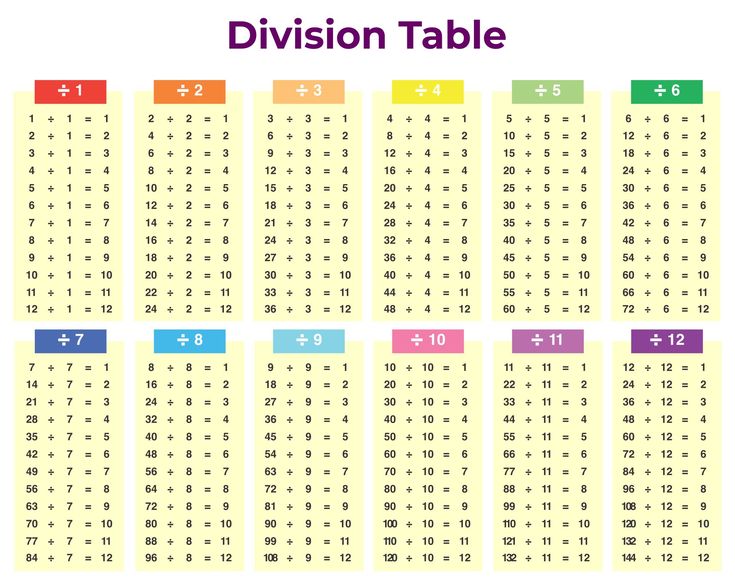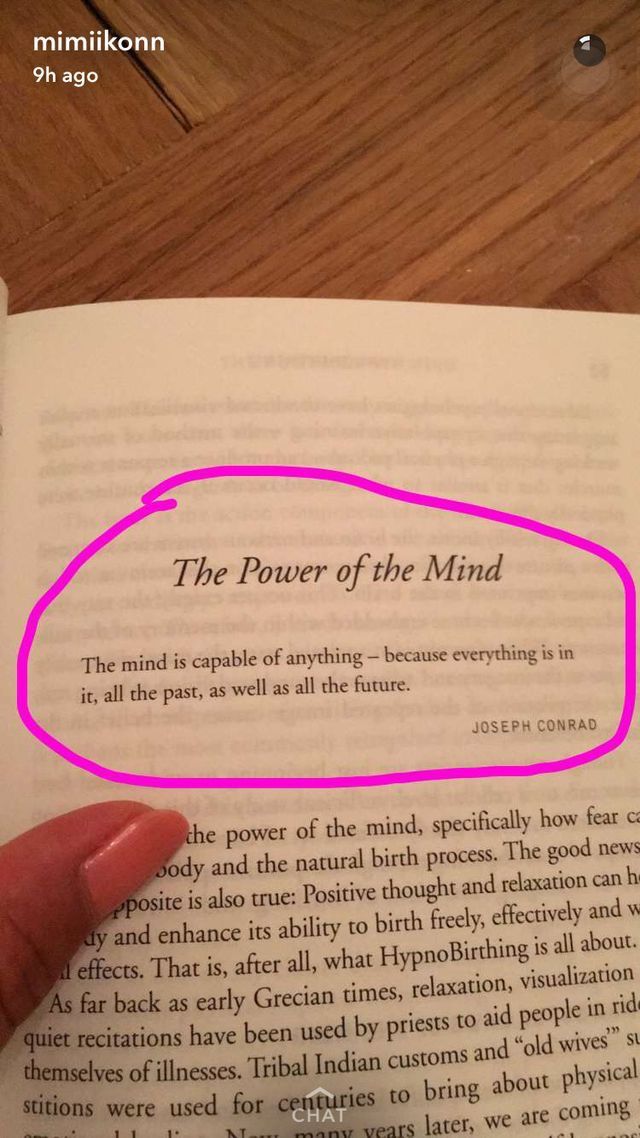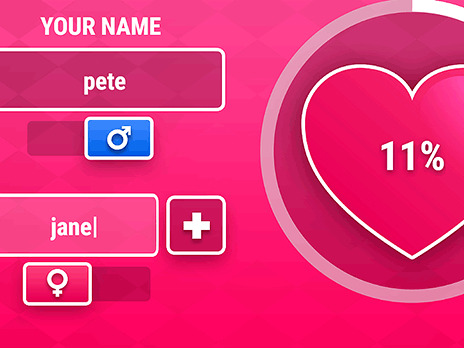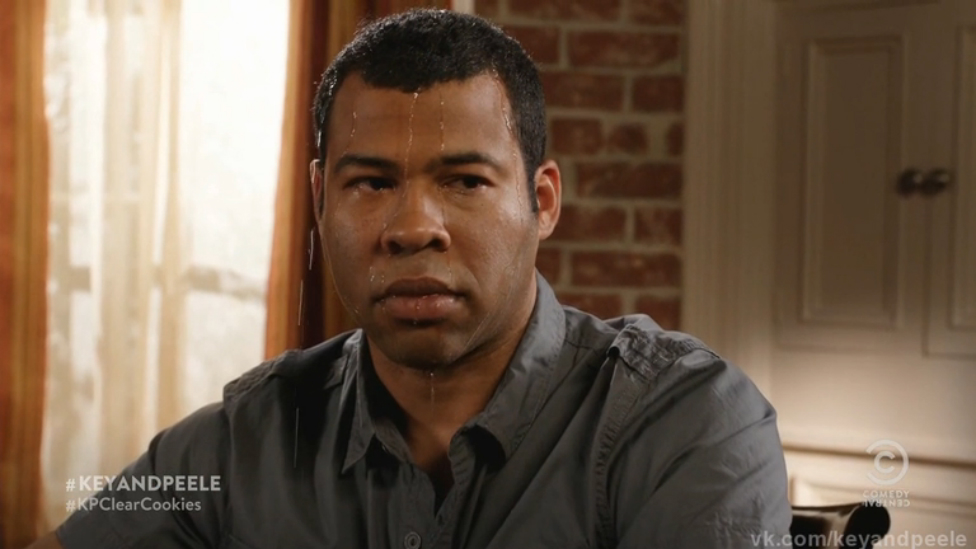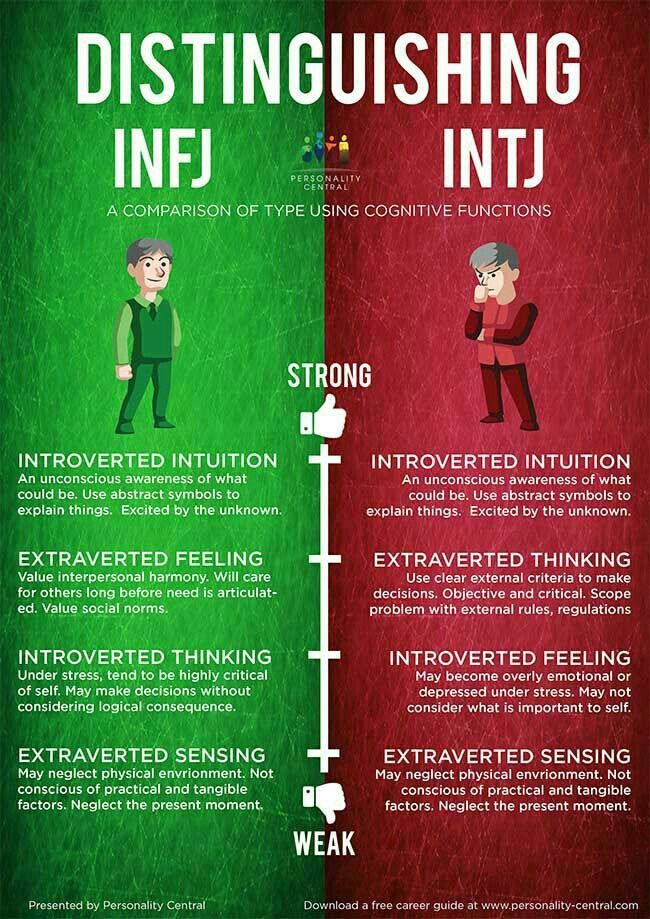Best way to memorize multiplication tables
The Easy Way to Memorize Multiplication Tables (An Amazing Hack!)
This post originally appeared on the blog Planning Playtime.
When I look back to my elementary years, one of the most difficult things I was asked to do was memorize my multiplication tables. There were so many of them, and they seemed like strings of random numbers that I had to keep in order and in context with the numbers they were being multiplied by. I managed with the help of my retired teacher mother and some quality time with flash cards, but it wasn’t until I was much older that I realized how critical the mastery of multiplication tables is.
Several years ago, I was trying to assist a couple of my neighbor girls who were in middle grade resource classes for failing math. They would come over with their math books and sit at my kitchen table. After a few minutes of watching them stare at the problems with a hopeless look in their eyes, I was shocked to realize the issue went well beyond the current material.
They didn’t know how to multiply without counting it out. Somehow the multiplication tables they should have learned 4-5 years previously had evaded them, and they were essentially crippled in math.
The trouble doesn’t seem to be with the 2’s, 5’s, and 10’s. These tables have an obvious pattern and are much easier to learn, but there is a serious slow-down as kids hit the 3’s, 4’s, and 6’s. By the time they get to the 7’s, 8’s, and 9’s, I’ve watched children decide that multiplication is way too hard, and math just isn’t their thing.
Fortunately for me, a wonderful 3rd grade teacher gave us the solution. It helped that he was male, and my 8-year-old daughter had a major crush on him. She ate up every word that man said, so when he taught her to skip count to some familiar tunes she came home singing her math just for fun.
What is Skip Counting?
Skip counting is counting at intervals of whichever number you choose. For example, if I was to skip count by 7 I would count, 7, 14, 21… and so on.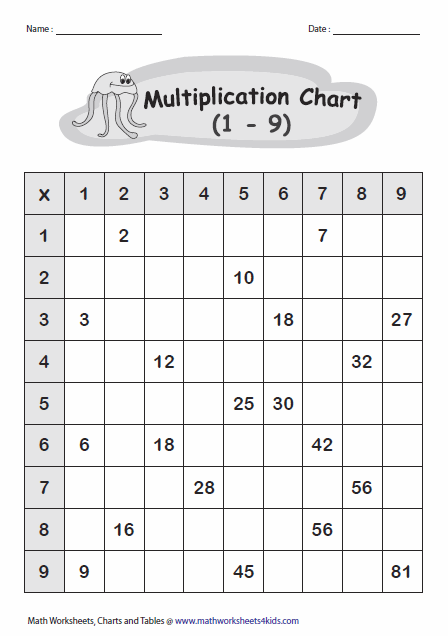 Using this method you can do single digit multiplication with ease. Say the teacher asks you to multiply 4 x 7 = __. You simply skip count 7’s, 4 times, 7, 14, 21, 28. The answer to 4 x 7 = 28.
Using this method you can do single digit multiplication with ease. Say the teacher asks you to multiply 4 x 7 = __. You simply skip count 7’s, 4 times, 7, 14, 21, 28. The answer to 4 x 7 = 28.
That still leaves the problem of memorizing a string of numbers, and here’s where the magic is. Teach children to skip count to the tune of a simple song. Have you ever wondered why children can learn the lyrics to songs so easily? It is because music can be used as a mnemonic device, that is a strategy to assist with memorization. If you can associate the numbers with the sounds in a song, the children will not only learn them faster, but retain them much longer than they would memorizing them exclusively through repetition.
While there are several options out there for skip counting songs, my favorite are the skip counting songs to familiar children’s tunes. That way your child doesn’t have to worry about learning a tune, and can focus immediately on the numbers. My second daughter, now 8-years-old, was asked to learn her 8’s this week.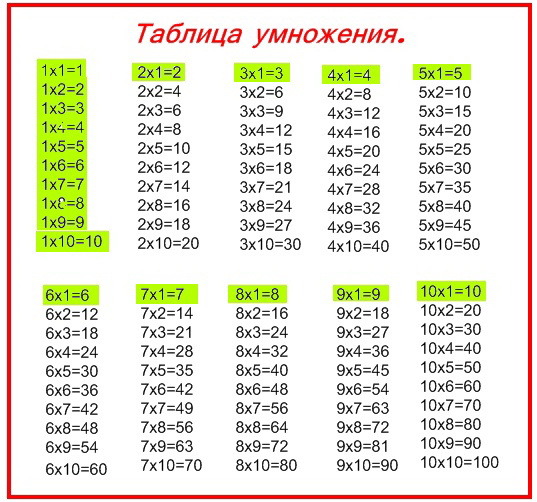 After singing the song just four times, she was already starting to skip count by herself. I’ve now started teaching them to my youngest children as early as kindergarten age because they love to sing, and it’s fun.
After singing the song just four times, she was already starting to skip count by herself. I’ve now started teaching them to my youngest children as early as kindergarten age because they love to sing, and it’s fun.
These songs have been a game changer for us, and we wanted to share them with parents and teachers around the world. My oldest daughter and I recorded the songs for you and created simple animated videos to help the children sing along. Since posting the videos, they have been used in tens of thousands of classrooms and homes across the globe, helping children master their multiplication tables. At the special request of teachers, I have also created simple sheet music that can be printed and sent home for extra practice. You can find the printable sheet music here.
*Photo Credit for the feature image goes to Poppies & Posies Photography! Check them out. They’re amazing!!
***
Amy Nielson is the education-obsessed mother of five who blogs at PlanningPlaytime.com. The daughter of a retired teacher mother, she learned at an early age an absolute love of learning, and she tries to bring a bit of joy and fun to everything she teaches.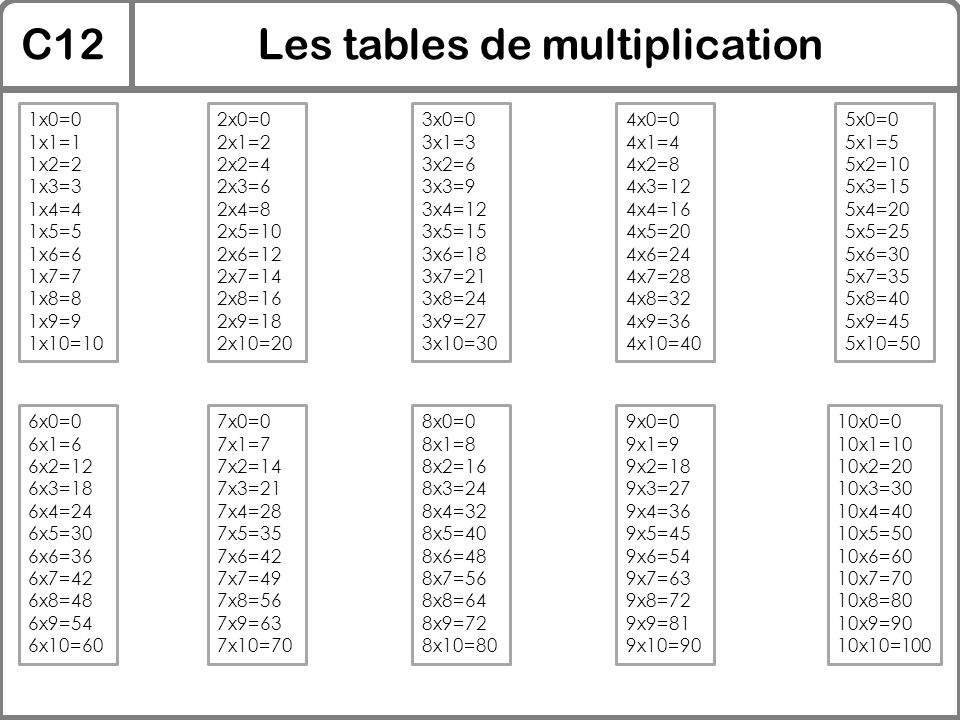 Having previously taught reading, preschool, and music, she is now at home full time teaching her preschooler to read and creating engaging, effective resources that her kids come home and fight over. Check out her work in her TpT store. You can also find her sharing great ideas on Facebook, Pinterest, and Instagram.
Having previously taught reading, preschool, and music, she is now at home full time teaching her preschooler to read and creating engaging, effective resources that her kids come home and fight over. Check out her work in her TpT store. You can also find her sharing great ideas on Facebook, Pinterest, and Instagram.
Visit her TpT store
Multiplication Facts That Stick: How to Teach the Times Tables - Kate Snow
Learn a simple and efficient method for teaching your child the times tables. Plus, the #1 mistake parents make when teaching their kids the multiplication facts.
How NOT to teach the times tables
In this article, you’ll learn a step-by-step plan for teaching your kids the multiplication facts.
But first, let’s get straight on what NOT to do.
For many people, memorizing the multiplication facts equals rote practice. So, these wonderful, well-meaning parents figure that there’s only one way to help their kids master the multiplication facts: make a big stack of flash cards and start drilling.
So, these wonderful, well-meaning parents figure that there’s only one way to help their kids master the multiplication facts: make a big stack of flash cards and start drilling.
These parents want the best for their kids, but they’re skipping a few steps…and they’re making the whole process a whole lot more painful and tedious than it needs to be. Practice and drill do help kids memorize the multiplication facts. But, they come at the end of the process, not the beginning.
Psst…want an all-in-one, open-and-go resource for teaching the multiplication facts? I’ve put all these steps together into one book for helping your kids master the multiplication facts.
What are the multiplication facts (or times tables)? Why are they so important?
The multiplication facts (also known as the times tables) are all of the multiplication problems from 1 × 1 = 1 up to 10 × 10 = 100.
- Related: Free Printable Multiplication Table (Blank and Completed)
Can you imagine trying to find common denominators or equivalent fractions without knowing 5 × 6? Or trying to do long division when you’re not quite sure what 7 × 7 is? And don’t even get me started on factoring polynomials…
Remember these from Algebra 1?Without full mastery of the multiplication facts, kids struggle as they start to tackle division, fractions, and problems with larger numbers.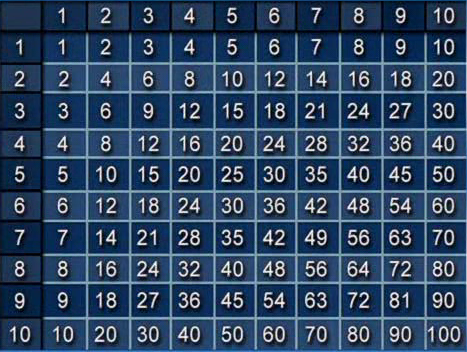 They use so much of their working memory on simple calculations that they have little brain space left for understanding new concepts.
They use so much of their working memory on simple calculations that they have little brain space left for understanding new concepts.
In what grade should my kids learn the multiplication facts?
Third grade. That way, they’re well-prepared to tackle third- and fourth-grade math topics like multi-digit multiplication, equivalent fractions, and division. But no matter what age your child is, learning the multiplication facts will make her much more confident and successful in math. If your older child hasn’t mastered the multiplication facts, it’s not too late.
What do my children need to know before memorizing the multiplication facts?
Before memorizing the multiplication facts, your child should first learn the addition facts and subtraction facts. Each set of facts builds logically on the previous set, so it’s important that your child learn them in this order.
Before your child begins memorizing the multiplication facts, you should first make sure that she understands what multiplication means.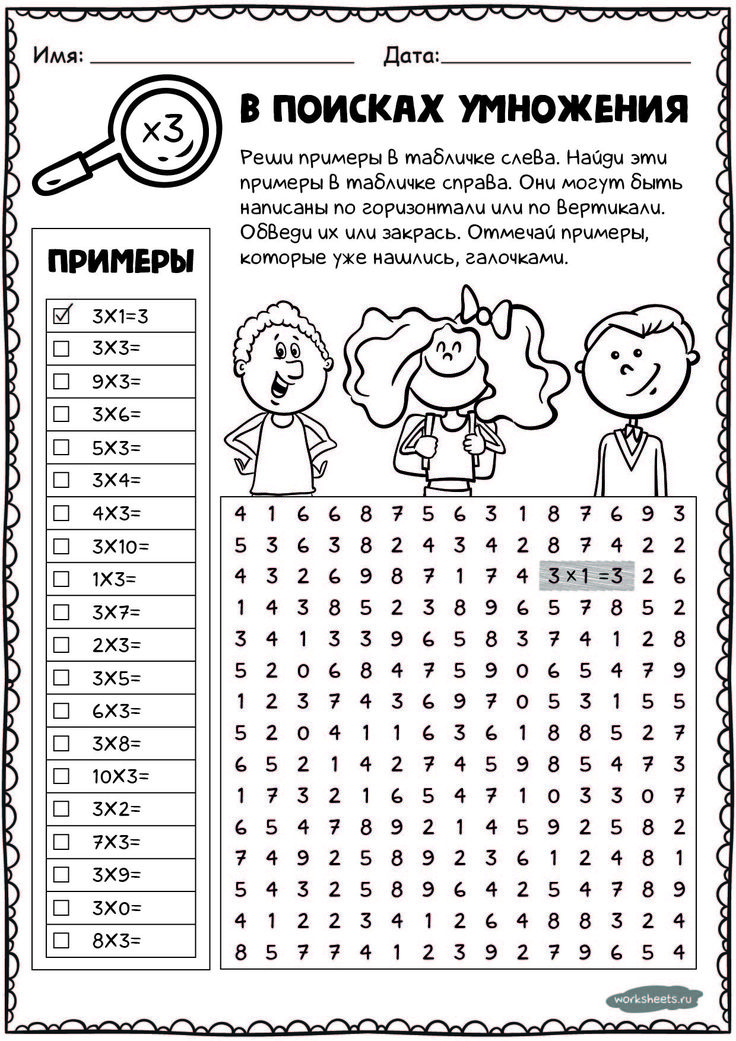 (For example, that 3 × 8 means “3 groups of 8.”) It also helps if she knows how to add one-digit numbers to two-digit numbers mentally. (You’ll learn more about why in Step 3 below.)
(For example, that 3 × 8 means “3 groups of 8.”) It also helps if she knows how to add one-digit numbers to two-digit numbers mentally. (You’ll learn more about why in Step 3 below.)
How fast should my kids know the multiplication facts?
Aim for no more than 3 seconds per fact, and faster if possible. But, it depends a lot on your child. Children who process information very quickly are quite capable of knowing each fact in less than 1 second, but children who are slower processors may always need a few seconds. You’re the parent and know your child best, so adjust your expectations to your individual child.
No matter how old your child, try to keep practice time relaxed and positive. Multiplication timed tests and drills aren’t necessary unless your child thrives on time pressure and finds it satisfying to beat the clock.
How to teach your child the multiplication facts
Teaching comes before practice
There’s 5 steps to mastering the multiplication facts:
- Step 1: Break up the facts into manageable chunks.
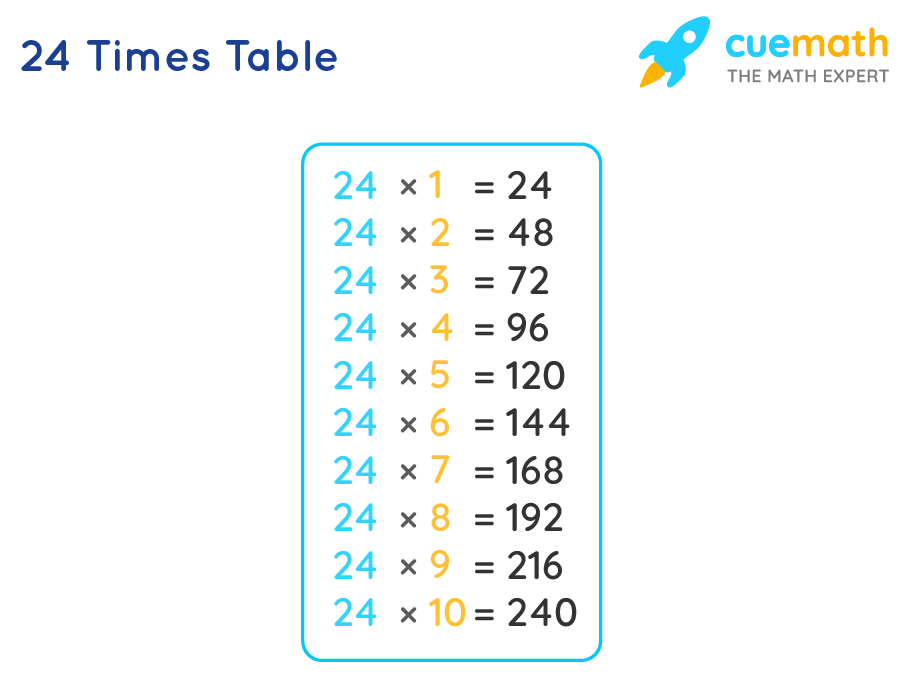
- Step 2: Make the facts concrete with a simple visual.
- Step 3: Teach your child to use easier facts as stepping stones to the harder facts.
- Step 4: Practice each times table on its own until it’s mastered.
- Step 5: Practice a mix of multiplication facts.
Notice how practice doesn’t come until step 4? Practice is important, but it’s not where you start! Teaching comes before practice.
Step 1: Break it up.
This is a short and easy step, but it’s important. Don’t overwhelm your child with all 100 multiplication facts at once. Instead, focus on just one times table at a time. (A times table is just one set of multiplication facts. For example, the ×6 table is 1×6, 2×6, 3×6, and so on up to 10×6.)
Breaking up the multiplication facts makes mastering the tables feel much more do-able (for kids and parents). Plus, your child can then use the easier facts as stepping-stones to the more difficult facts.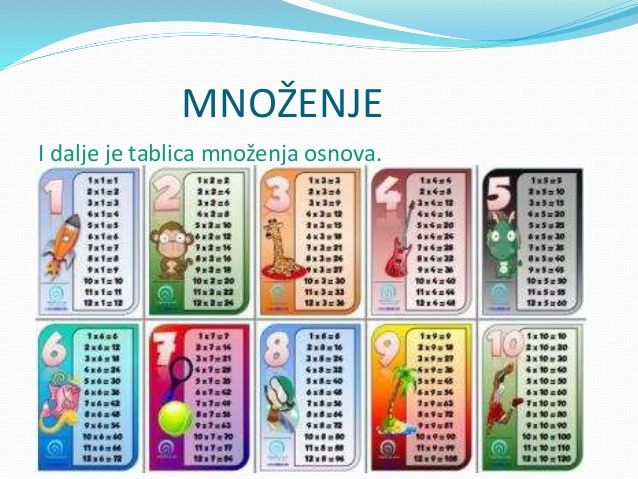
Step 2: Make the facts concrete with a multiplication array.
For each times table, first make sure your child understands concretely what the multiplication problems mean. Otherwise, the numbers are just sequences of abstract symbols–and they’re a lot harder to memorize.
In general, I’m a big fan of hands-on manipulatives for helping kids understand math. But with multiplication, manipulatives can become pretty unwieldy. It could take your whole math lesson just to count out 6 groups of 8 objects–and your child probably wouldn’t be much closer to remembering that 6 × 8 equals 48.
Instead, I like to use a simple grid of circles called a dot array. With a dot array, you can slide an L-shaped cover over the top of the array and show any multiplication fact you want from 1×1 up to 10×10. Here’s what the dot array and L-cover look like.
Here’s how you use them. For example, let’s say we wanted to help your child understand what 6 × 8 looks like. 6 × 8 means “6 groups of 8,” so slide the L-cover so that the dot array looks like this.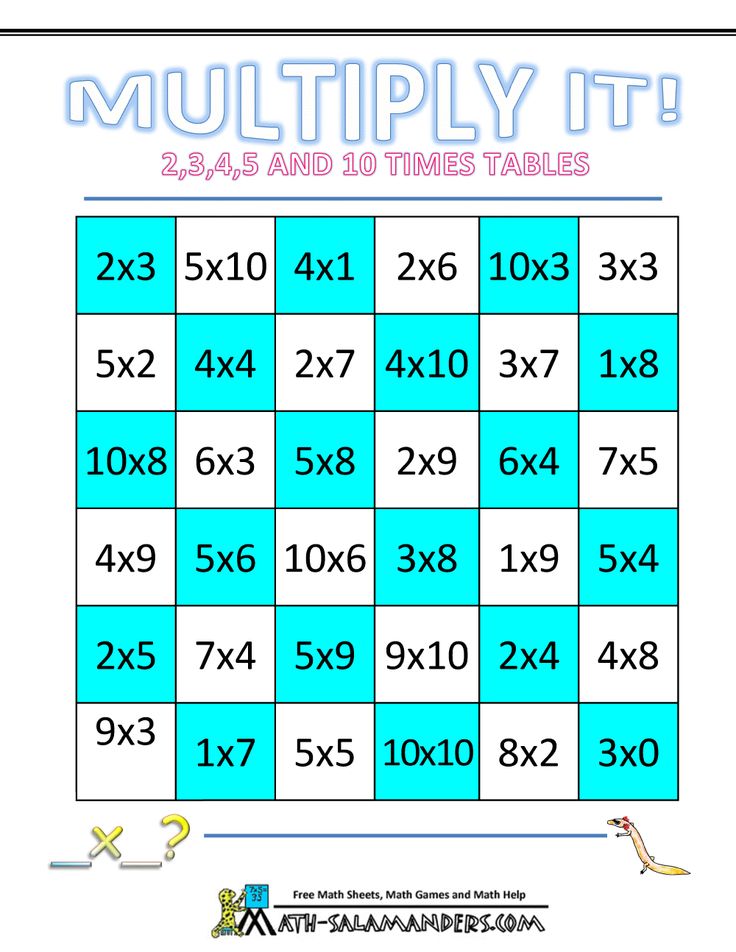
Each of the 6 rows has 8 dots, so there are 6 groups of 8 dots. So, the total number of dots in the array is the answer to 6 × 8.
- Related: Download your own printable multiplication array and L-cover.
How does visualizing the multiplication facts help kids remember the answers? That’s where Step 3 comes in.
Step 3: Teach your child to use easier facts as stepping stones to the harder facts.
Multiplication is a bit like climbing a huge pile of rocks. When you’re trying to reach the top, it’s a lot easier to climb up a few small rocks rather than try to scale a sheer rock face.
You definitely don’t want to try to get straight up this one!With multiplication facts, it’s much easier to use facts you’ve already learned as “stepping stones” to the harder facts rather than to memorize them by rote. The dot array will help your child do this!
For example, let’s go back to 6 × 8. It’s one of the toughest facts for kids to memorize, but most children find it quite easy when they use 5 × 8 as a stepping stone.
Here’s how you teach your child to use easier facts as a stepping stone to 6 × 8:
- 5 × 8 is 40. (5 × 8 makes a nice stepping stone, since children’s familiarity with 5s from their early years of arithmetic usually make the ×5 facts easy to learn.)
- 6 × 8 is just one more group of 8 than 5 × 8.
- So, you can just add 40 + 8 to find the answer: 6 × 8 = 48.
This strategy works for all of the ×6 facts. And the good news is that there are similar strategies for all the multiplication facts!
- Related: Multiplication Strategies That Will Help Your Child Master the Times Tables
To use stepping stones, it’s helpful if your child knows how to add a 1-digit number to a 2-digit number mentally. If your child could use a little more practice with mental addition, I’ve put together a short lesson and game that will help him brush up on this skill.
- Related: The Mental Addition Game That’s Really a Multiplication Game
With this combination of the dot array and stepping-stone facts, your child has a game plan for mastering all the multiplication facts for good.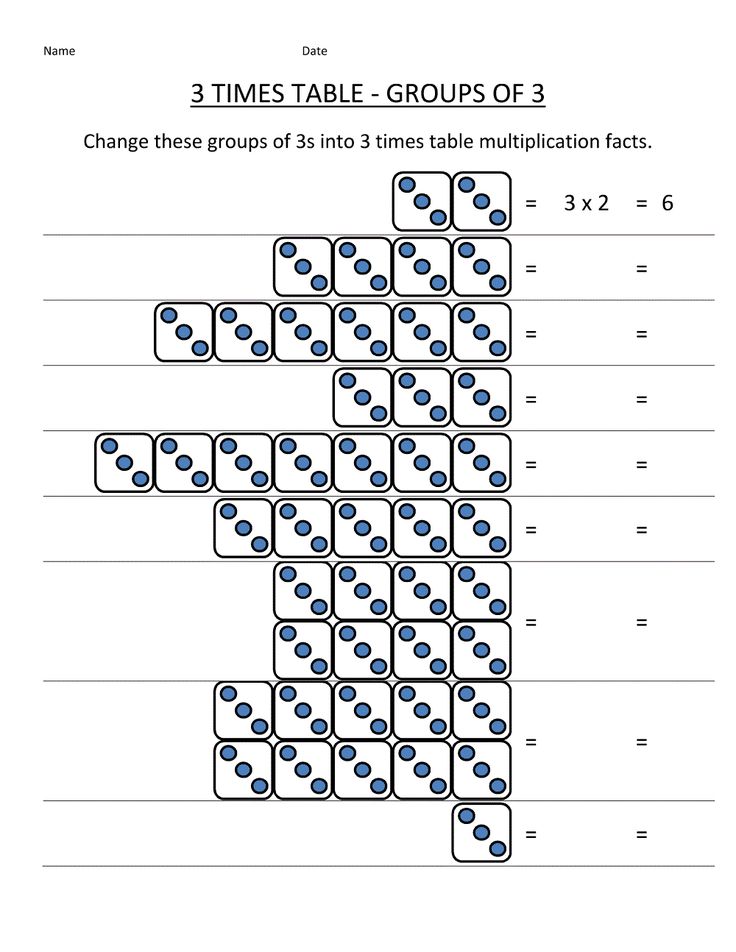 (Without having to memorize each fact individually.) Now, all you need are some effective practice techniques to help your child become fully automatic with all the multiplication facts.
(Without having to memorize each fact individually.) Now, all you need are some effective practice techniques to help your child become fully automatic with all the multiplication facts.
Step 4: Practice each times table on its own until it’s mastered.
Once your child has learned how to use stepping-stone facts for a times table, focus on just that specific times table for several days. Use a mix of practice techniques to give your child some variety and make learning multiplication fun. I like using a mix of recitation, games, and worksheets, so that kids speak, see, and write the facts.
Recitation
I know, reciting the times tables may seem old-fashioned. But, saying information aloud helps to cement it in your child’s memory. Plus, reciting each table in order helps your child understand how the facts in the table are related. For example, reciting “1 × 7 is 7. 2 × 7 is 14. 3 × 7 is 21…” reminds your child that each new fact in the ×7 table is 7 more than the previous fact.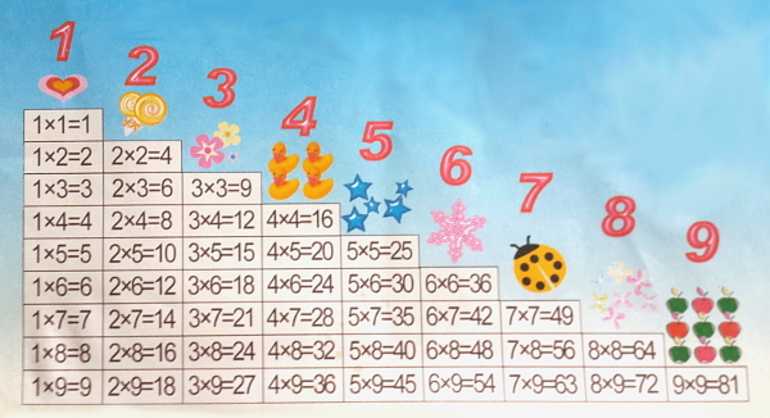 So, she can add 7 to each previous fact to help her remember the next one, because the facts in the table add a new group of 7 each time.
So, she can add 7 to each previous fact to help her remember the next one, because the facts in the table add a new group of 7 each time.
Games
I heart math games! They make math fun and social, but they also have a huge teaching benefit: when you play a multiplication game with your child, you can monitor how well your child is using the strategies–and fix any mistakes before they become ingrained.
Worksheets
Worksheets aren’t the most exciting, but they’re an important practice component, since your child will often use multiplication in his written work. Keep worksheets short and sweet so that your child stays alert and focused.
Step 5: Mix those multiplication facts with other times tables.
Once your child has mastered the new times table, it’s time to mix up those multiplication facts with the facts she’s already mastered. Mixing them together provides cumulative review so that the facts are cemented in her long-term memory. Keep using recitation, games, and worksheets (and even flash cards, if you want) until your child has all 100 facts memorized.
Keep using recitation, games, and worksheets (and even flash cards, if you want) until your child has all 100 facts memorized.
- Related: 3 Fun (and Free!) Printable Multiplication Facts Games for practicing mixed multiplication facts
Teach Multiplication Facts That STICK
So, that’s all 5 steps! You’re now well-equipped to teach your child the multiplication facts (and not just drill stacks of flash cards.)
You could spend hours planning out lessons, making up your own worksheets, and scouring Pinterest for cute multiplication games. (And hey, if you like doing that kind of thing, go for it!) But, if you have other things to do, I’ve already done the work for you.
Multiplication Facts That Stick is an open-and-go, all-in-one book for teaching your child the multiplication facts. It gives you detailed lesson plans, fun games, and simple worksheets for every step of the process, so that you can teach your child multiplication facts that truly stick.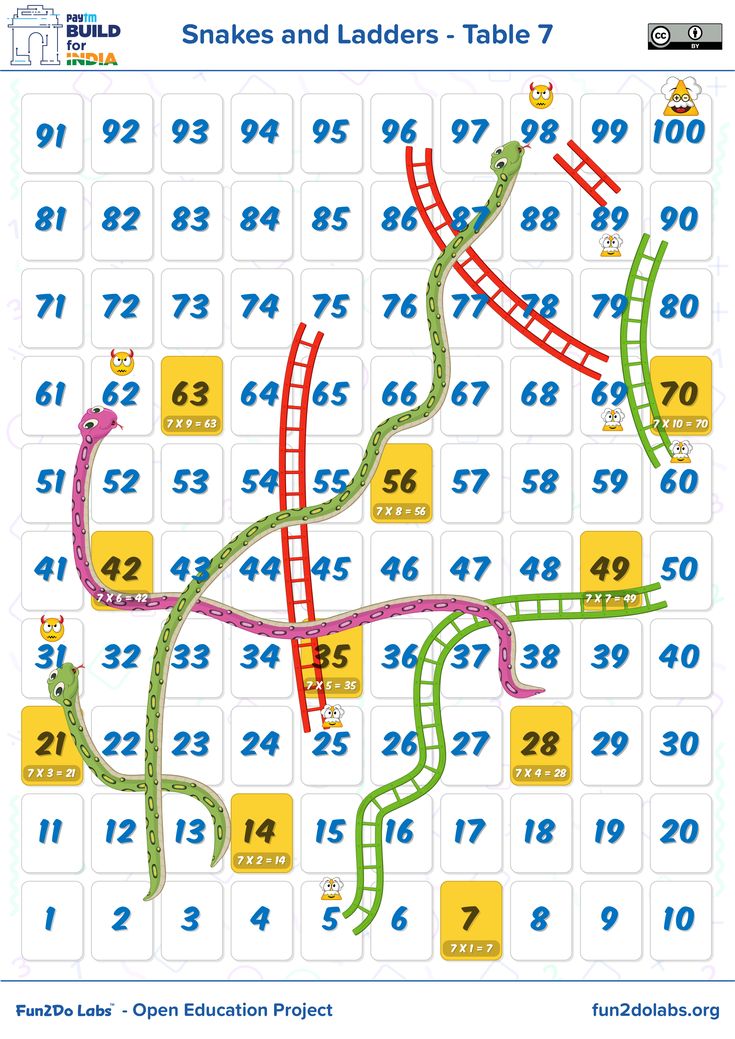
How to learn the multiplication table easily and quickly
July 3, 2020 Likbez Education
These tricks will save your student's summer.
1. Hack the system
Usually the multiplication table on the back of school notebooks looks like this.
Photo: Ramif / DepositphotosThe mere sight of these endless columns of numbers can drive an energetic elementary school student into despair. Therefore, without a doubt, take a bold marker and cross out the mathematical torture in front of the child's eyes. This is not just a performance, but a way to create a positive attitude.
Instead of complex examples, offer the student a Pythagorean table.
This is the real multiplication table. Show your child how easy it is to use.
The result of multiplying two digits is the number that is at the intersection of the row and column with the corresponding digits. For example, to multiply 3 by 4, it is enough to mentally draw two lines: one horizontal from the number 3 in the left column, and the second vertical - from the number 4 in the top row.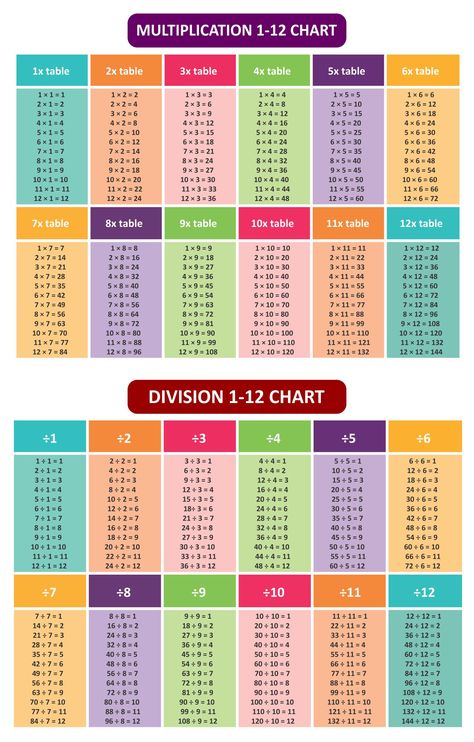 Result - 12.
Result - 12.
2. Explain that the task is twice as easy as it seems
Multiply 3 by 4 together. Now ask the child to reverse the numbers: choose 3 not in a vertical column, but in a horizontal line. And 4, respectively, in the column on the left. Please note that the result will be the same. Both 3 × 4 and 4 × 3 equals 12.
This rule is called the commutativity property. Or in children's language, "the result does not change from changing the places of factors."
You don't need to remember how much 3 × 4 or 4 × 3 will be. It is enough to learn that the numbers 3 and 4 in any order, when multiplied by each other, give 12.
A simple conclusion follows from the commutativity property. Multiplication table - half the size and simpler than it seems. If you know how much 4 × 7 will be, then you automatically know how much 7 × 4 will be. You do not need to learn this further.
3. Help your child understand the physical meaning of multiplication
This can be done by drawing rectangles on the table with sides corresponding to the multiplied numbers.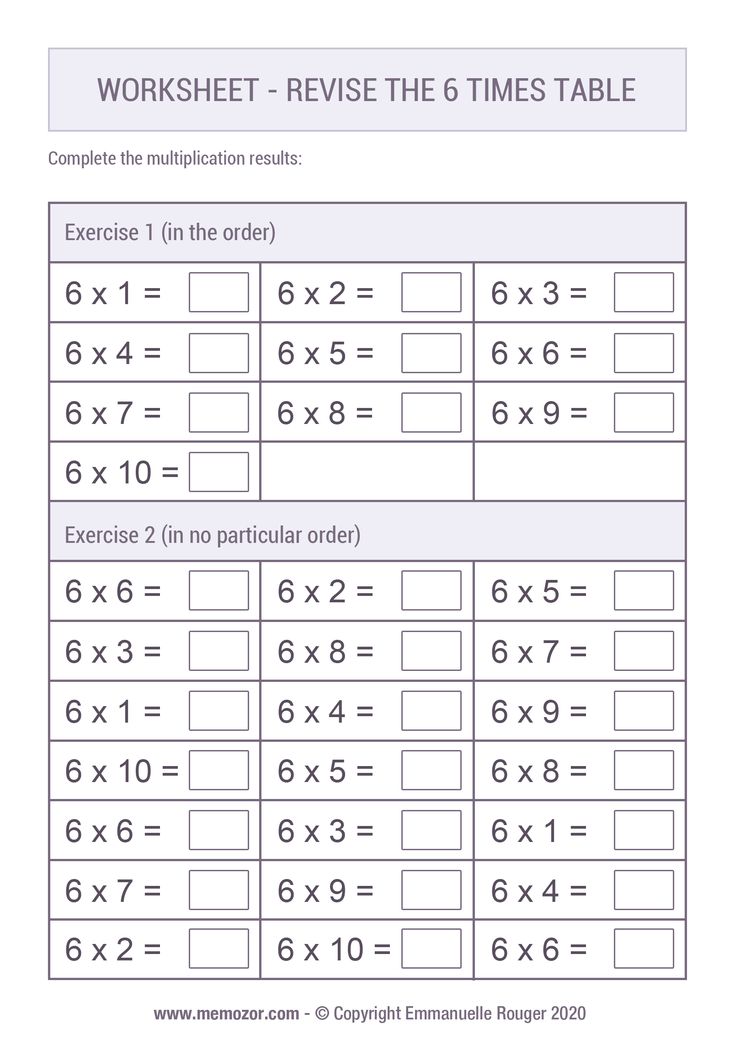
For example, this is how you can show what 2 × 4 is - these are two rows of four cells in each.
Ask the child to count how many cells fit in the resulting rectangle. So he will find out for himself that 2 × 4 = 8.
Scan or print several copies of the Pythagorean table and, together with the student, draw other rectangles - horizontal, vertical, small and large, counting how many cells are in them. Thus, at the same time, you use visual memory: remembering how much it will be, for example, 3 × 4, the child will imagine the corresponding figure - and easily answer.
4. Find patterns in the table
When a child discovers a pattern on his own, he remembers it forever. This is an easier and more effective way to master the multiplication table than cramming.
Here are some patterns that you should pay attention to.
- When multiplied by 1, any number remains the same.
- Multiplying by 2 is just a number to which it has been added.
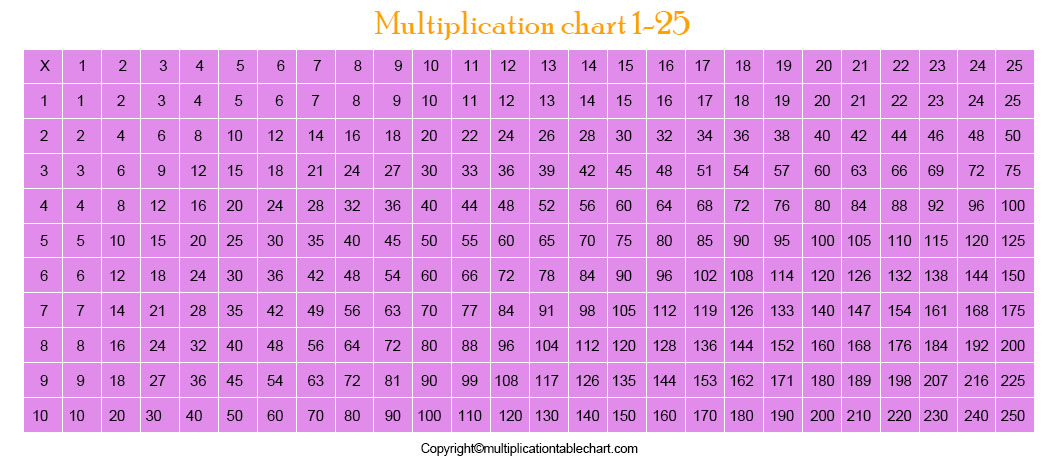 For example, 3 × 2 means that 3 is added to the number 3. 8 × 2 means 8 + 8.
For example, 3 × 2 means that 3 is added to the number 3. 8 × 2 means 8 + 8. - All examples multiplied by 5 have a result that ends in 5 or 0.
- To multiply any even number by 5, you need to take its half and add 0 to it. For example, 6 × 5: take half of 6 - this is the number 3 - and we add zero to it: it turns out 30.
- When multiplied by 9, the sum of the digits in the result will necessarily be equal to 9. For example, 2 × 9 = 18 (1 + 8 = 9). 3 x 9 = 27 (2 + 7 = 9). And so on.
- To multiply any number by 10, just add zero to the right of it.
5. Learn in small chunks
Don't try to memorize everything in one sitting. Start by multiplying by 1, 2, and 3, and spend a day or two studying each such topic. So you gradually prepare the child for the assimilation of more complex information.
When the student has figured out and mastered the simplest columns, move on to more difficult numbers: first to multiply by 4–7, and then by 8–9.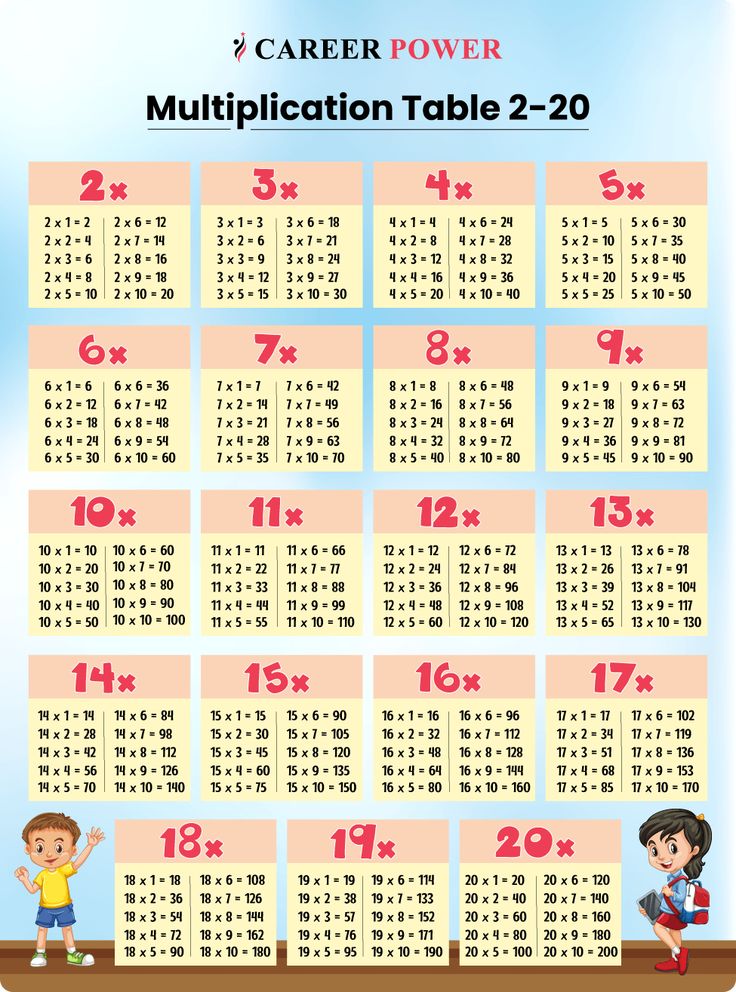
6. Repeat
The more often the better. First, ask in order, and when the answers become confident, randomly. Keep track of the pace: at first, give more time to think, but gradually ask the child to answer faster.
7. Print or buy educational posters
A few are better. Hang them in those places where the child spends a lot of time - in the nursery (play area), above the desktop, on the refrigerator.
Posters should be large and bright. You can also use those that do not show the Pythagorean table, but standard examples. In any case, the child will cling to the colorful image with his eyes, and it will be fixed in memory.
8. Teach your child math tricks
Here are some simple examples.
Multiply 7 Trick
You will need some dice. Tell the child that no matter how many dice he rolls, you will immediately say the sum of the dots on their top and bottom faces - even though the bottom of the dice is not visible.
The secret is simple: the dice are arranged in such a way that the sum of the points on the top and bottom surfaces is always 7. Thus, to find out the correct answer, it is enough to multiply the number of dice thrown by 7.
Thus, to find out the correct answer, it is enough to multiply the number of dice thrown by 7.
Invite the child to show the trick to a brother or sister, grandparents, friends. Let the student change the number of cubes. This will help him fix the multiplication by 7 in his memory. You will have 10 fingers in front of you. Mentally number them from 1 to 10: the thumb of the left hand is 1, the index finger is 2, and so on, up to the thumb of the right hand, which will correspond to 10. Then proceed like this.
- Select the number you want to multiply 9 by.
- Press the corresponding finger down.
- Count how many fingers remain to the left of the pressed one - these will be tens in the desired answer. On the right are units.
For example, you need to multiply 9 by 2. You press the second finger in a row - the left index finger. To the right of it remains 1 finger (the number of tens), to the left - 8 (the number of ones). Correct answer: 9 × 2 = 18.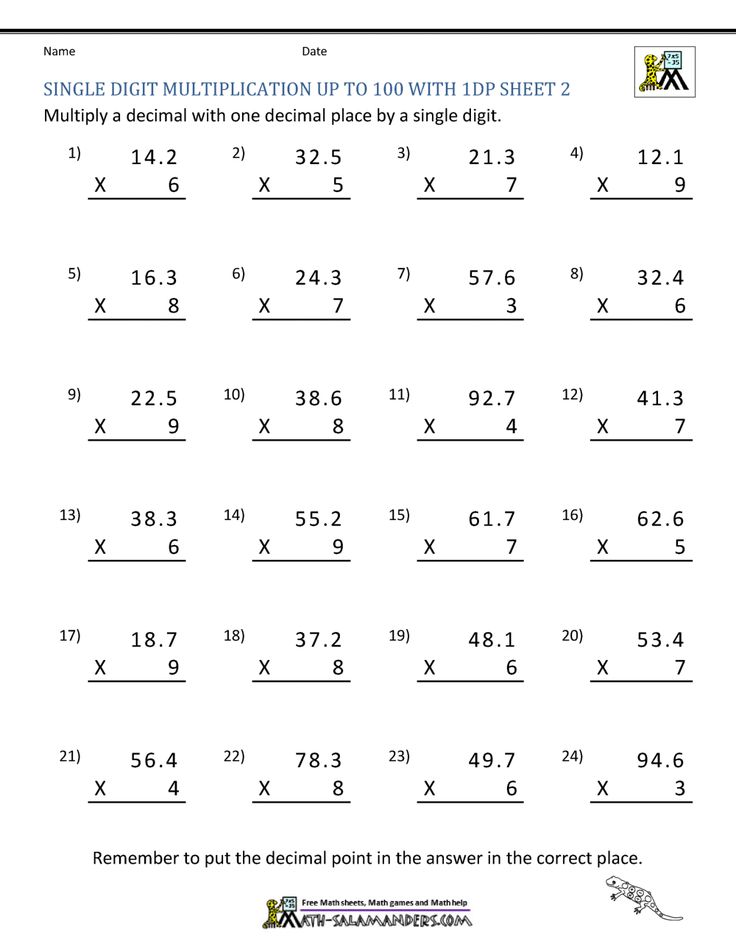
9. Show that math is useful
It is difficult for children, as well as for adults, to memorize abstract things - those that are not used in everyday life. Your task is to demonstrate to the child that the multiplication table is very useful. This can be done in many ways.
For example, invite a student who is going for a walk to treat friends to candy or cookies. “Katya, Vasya, Platon and Ira are waiting for you on the site. You are going to give each of them 2 candies. How many sweets do you need to take?
Another option: have the child count the total number of wheels on six cars passing by. Or find out how many people will go to a picnic if you are going to meet four families, each of which has three people.
10. Play Math
Today you can buy a lot of teaching aids with colorful pictures and thoughtful logic problems. Thanks to such exercises, learning turns into an exciting game. But you can play without spending money on books.
Use ready-made games with dice
Any rpg will do, in which the player advances the number of cells indicated by the rolled dice.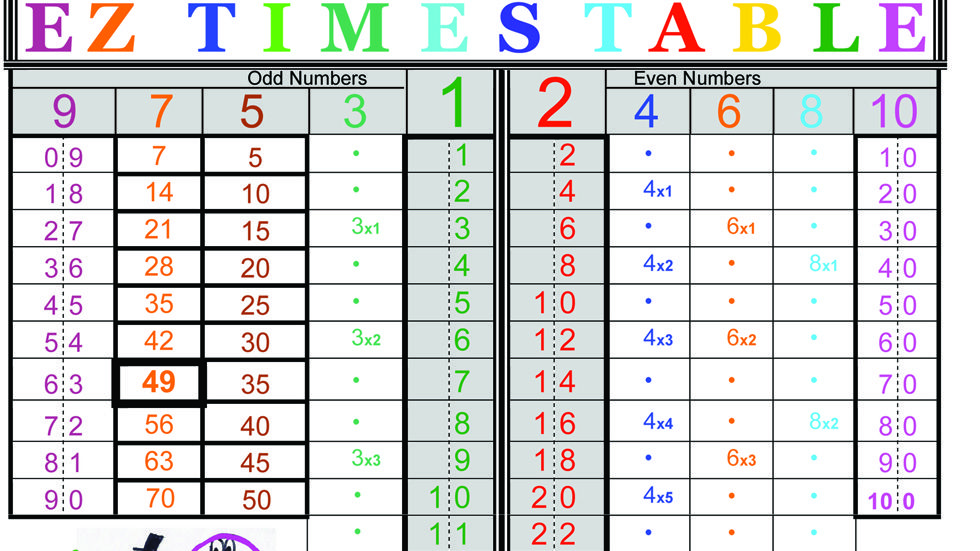 Tell your child that today all throws are considered doubles (or, let's say, triples). As a rule, children really like the idea of going two or three times as far as the cube indicates.
Tell your child that today all throws are considered doubles (or, let's say, triples). As a rule, children really like the idea of going two or three times as far as the cube indicates.
To add interest to the game, try to cheat regularly. For example, say: “So, I rolled a 4, which means I have to go twice as far ... 10 cells!” Let the child correct you.
Invite the child to get ahead of the calculator
You will need all the same dice (if the child is learning multiplication from 1 to 6) or a deck of playing cards without pictures (if we are talking about multiplying numbers from 6 to 10). Have the student roll two dice or draw two cards from the deck.
When you see the numbers, you multiply them on the calculator and the child does the same mentally. Whoever does it the fastest gets a point.
The game can last up to 7 points, for example. The winner receives a predetermined prize.
11. Do not turn learning into stress
Often, controlling children's learning, parents get too carried away and make the same mistakes.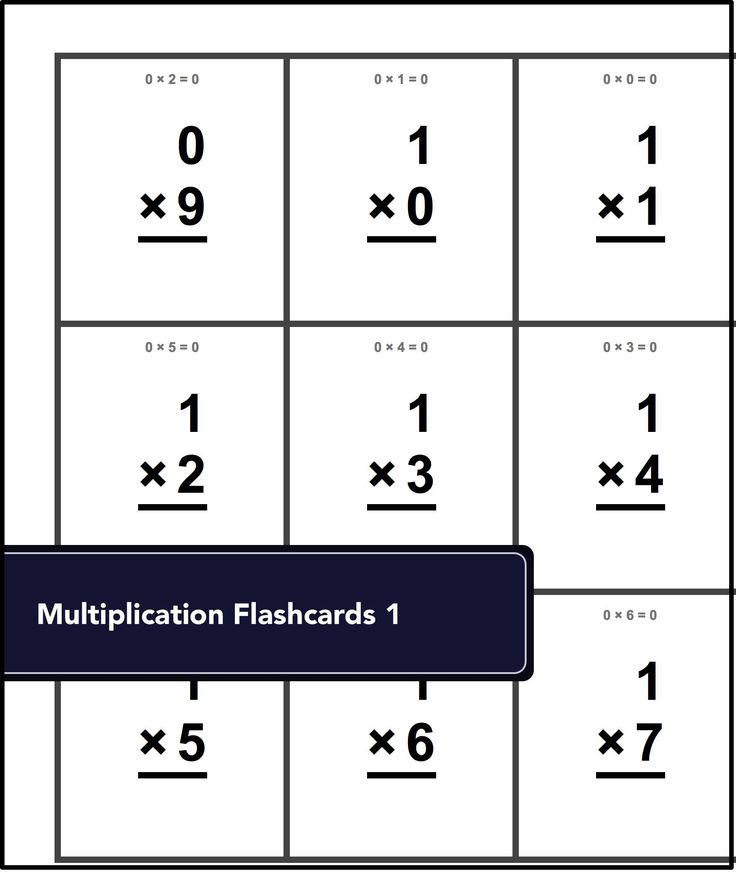 Here's what you should never do.
Here's what you should never do.
- Force a child to study if he does not want to. Try to motivate: study should be interesting, and not turn into torture.
- Scold for mistakes and scare with bad grades.
- Use classmates as an example. When someone compares you to someone, it's unpleasant. And it often provokes a protest: “Since I’m worse, I won’t teach anything at all!”
- Learn everything at once. It is easy to frighten and tire a child with a large amount of new information.
- Ignore progress. Praise your child when they complete tasks. This will reduce stress and stimulate the desire to study further.
This article was first published in January 2017. In July 2020, we updated the text.
Read also ✂️✏️📐
- 8 ways to find the circumference of a circle
- 7 ways to find the area of a rectangle
- How to teach your child to count effortlessly
- How to learn to write beautifully
- How to convert a common fraction to a decimal
*Activity of Meta Platforms Inc.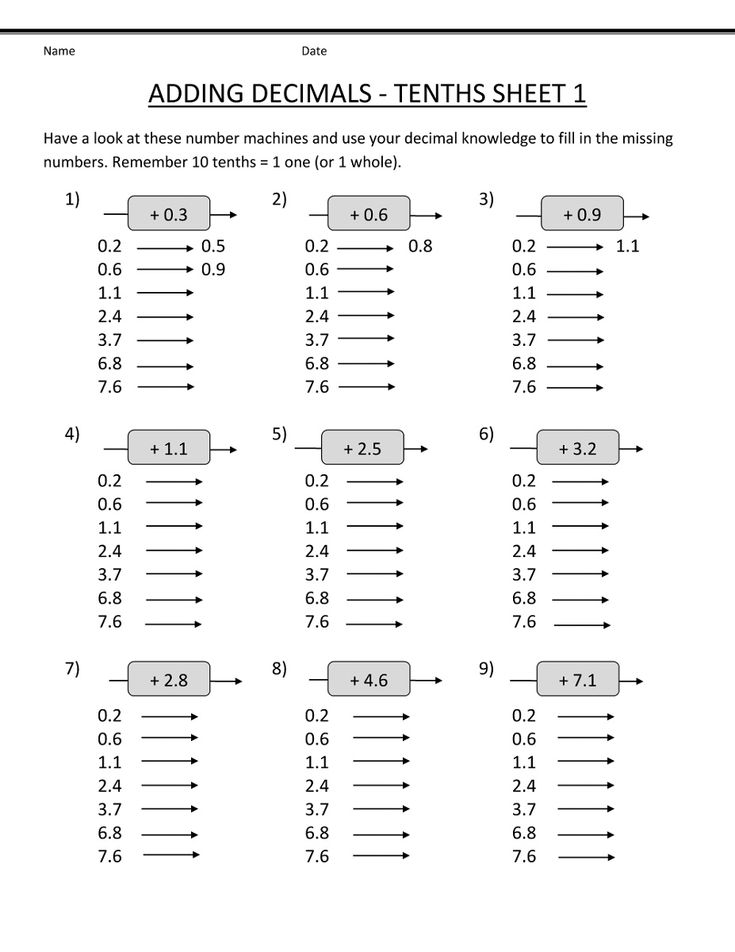 and its social networks Facebook and Instagram are prohibited in the territory of the Russian Federation.
and its social networks Facebook and Instagram are prohibited in the territory of the Russian Federation.
How to quickly and easily learn the multiplication table for a child
The multiplication table is the basis of many mathematical problems. However, with its study, schoolchildren often have difficulties. Parents have to spend a lot of time and effort to help their child learn the multiplication table. But if you turn boring cramming into a fun game, the learning process will become easy and interesting.
How to make it easier for your child to memorize the table
If you want to help your child learn the table, consider the following recommendations:
- Submit information in parts. So it will be better deposited in memory. Learn no more than one column of the table at a time. Even if the student is eager to remember everything at once, this is not necessary.
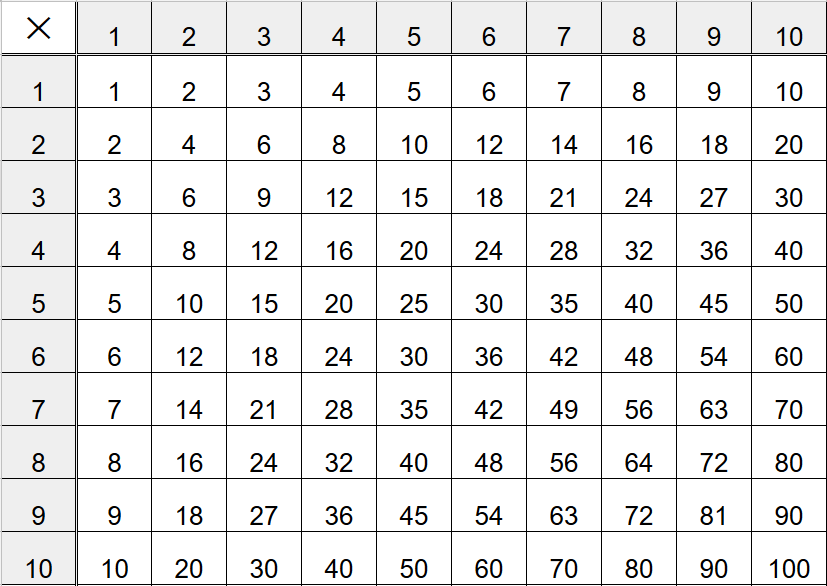 The dosed supply of information brings the best results.
The dosed supply of information brings the best results. - In the process of learning take breaks , allowing the brain to rest and switch to another activity. After a while, return to the lesson by asking the child to repeat the memorized numbers.
- Do not move on to studying the next column of the table until the child well remembers the previous one. Otherwise it will get confused.
- Try to organize the lessons in a playful way . So the student will be more interesting to study, and the information will be better deposited in memory.
Be sure to praise your child for success. This will increase his motivation to keep going. Do not scold for mistakes and do not scare with bad grades. And never set your child as an example of classmates who study better than him. Nothing lowers motivation more than comparison in favor of others.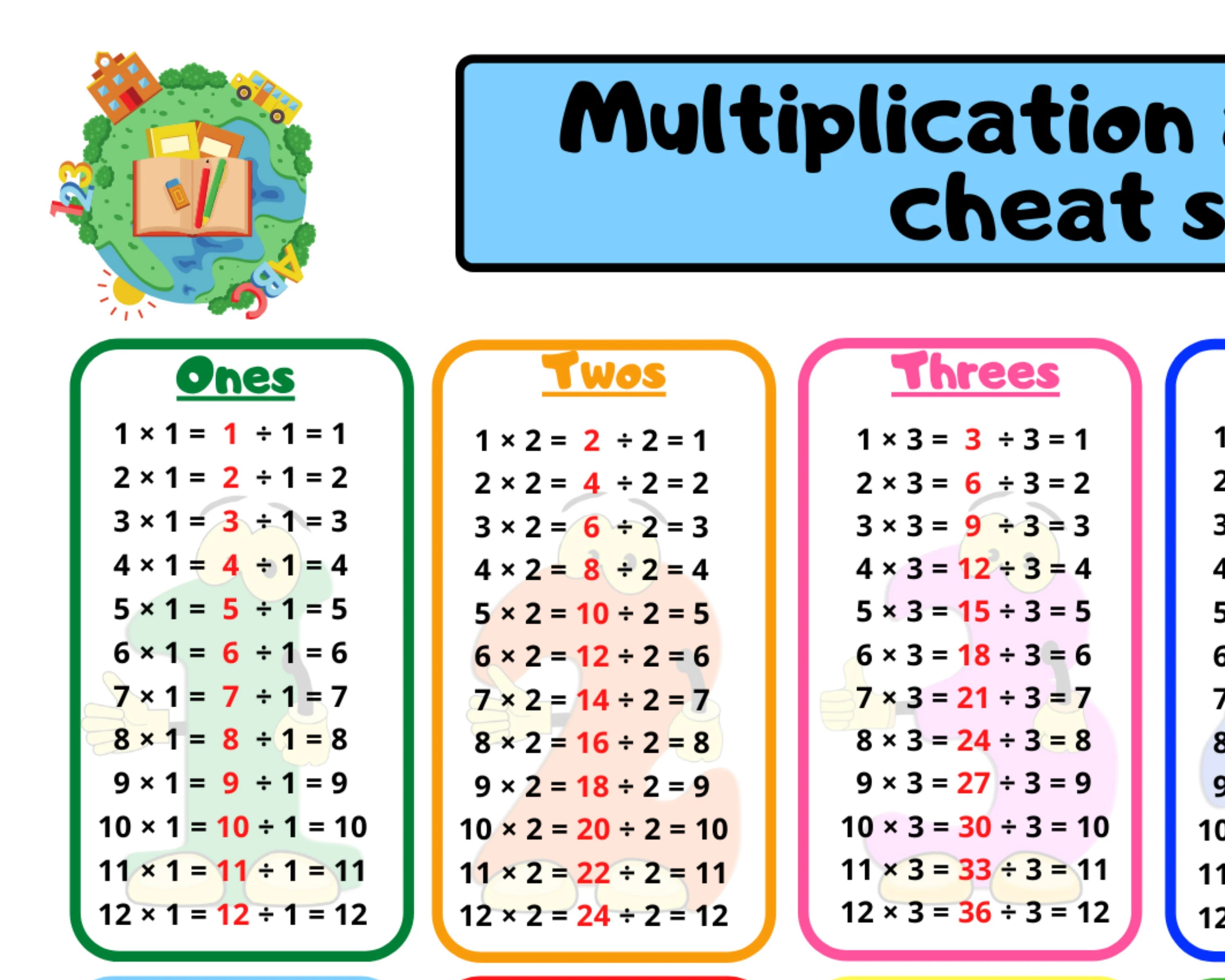
Learning kits from TUMBLING
Methods to help learn the multiplication table
There are many ways to make learning the table easier. The most important thing is that the child understands the pattern of multiplying numbers. Your task is to explain this pattern to him and visually show it.
Table Pythagoras
A table consisting of columns of examples is usually printed on the back of school notebooks. It's not very easy to learn. Seeing these incomprehensible columns, the child will simply be confused. Therefore, the Pythagorean table is more suitable for younger students.
This is the same multiplication table, only the numbers in it are not arranged in columns, in the form of a square. It is very easy to use it. The first multiplier is located on the horizontal axis, and the second - on the vertical one. Mentally draw a line from each multiplier to the center of the square. The number at the point where these lines converge will be the product of these two factors. Now swap the factors - find the first on the vertical axis, and the second on the horizontal. The result will be the same.
The number at the point where these lines converge will be the product of these two factors. Now swap the factors - find the first on the vertical axis, and the second on the horizontal. The result will be the same.
Tell your child this diagram and show how easy it is to multiply one number by another. Ask him to do this procedure with all the numbers. The Pythagorean table is memorized very quickly.
So that your child can repeat it regularly, buy a large chart (these are sold in office supply stores) and hang it in the child's room. The more colorful the table, the better, because bright colors will attract the child's attention.
Multiplication in verses
Simple rhymes will help the child remember some examples of multiplication:
- “Twice two is four. Two by two is four. Everyone in the whole world knows this."
- "Five five - twenty five, six six - thirty six, six eight - forty eight.
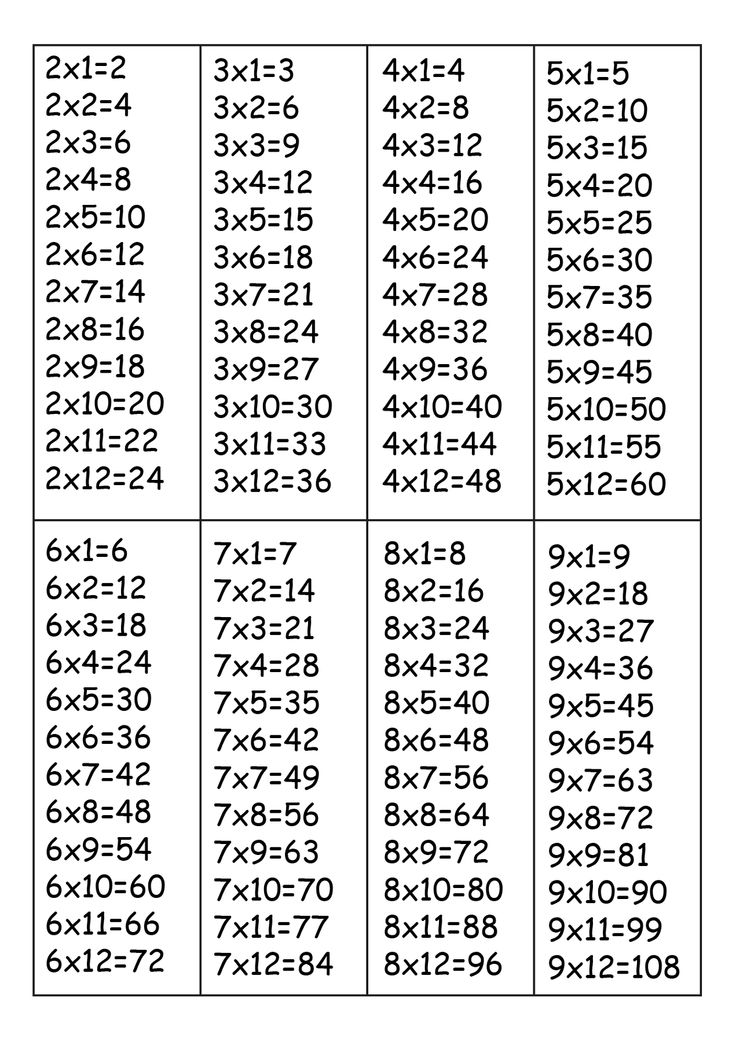 "
"
These are just a couple of examples of common rhymes. You can find other rhymes or come up with your own. Of course, you cannot learn the entire table in poetic form, but rhyming lines help to remember individual examples.
Games for the development of logic and mathematical thinking from TUMBLING
Game with cards
Children remember information well when it is presented not in the form of boring lessons, but in the form. Learning the multiplication table can also be turned into a fun game. To do this, you will need cards that are easy to make yourself.
Take a piece of cardboard and cut into 100 small squares. On one side of each square, write an example from the table (1x1, 2x2, etc.), and on the other side, write the answer. The cards are ready, you can start playing.
Shuffle the cards. Take out any at random and show an example to the child. He must answer. Then do the opposite - show the answers, and let the child say which numbers need to be multiplied to get such a result.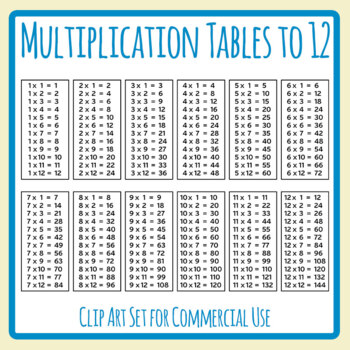 To make it more interesting for the child to play, periodically change roles. He will show examples, and you will answer.
To make it more interesting for the child to play, periodically change roles. He will show examples, and you will answer.
Multiplication with counting sticks
Get a set of counting sticks or matchboxes. Show your child how to use them to solve the examples from the table. For example, you want to multiply two by three. Put two sticks in one pile, two in another, and two in a third. Invite the child to count the number of sticks and make sure that it corresponds to the result in the table.
Mobile games
In this digital age, you can use your phone or tablet to memorize multiplication tables. There are special mobile games or simulators that allow you to easily remember the table. Choose the application you like and download it to your mobile phone. Let the child play and learn. Points earned for correct answers will motivate him. And you can see his statistics and progress.
Math coloring
There are special coloring pages for children with multiplication examples.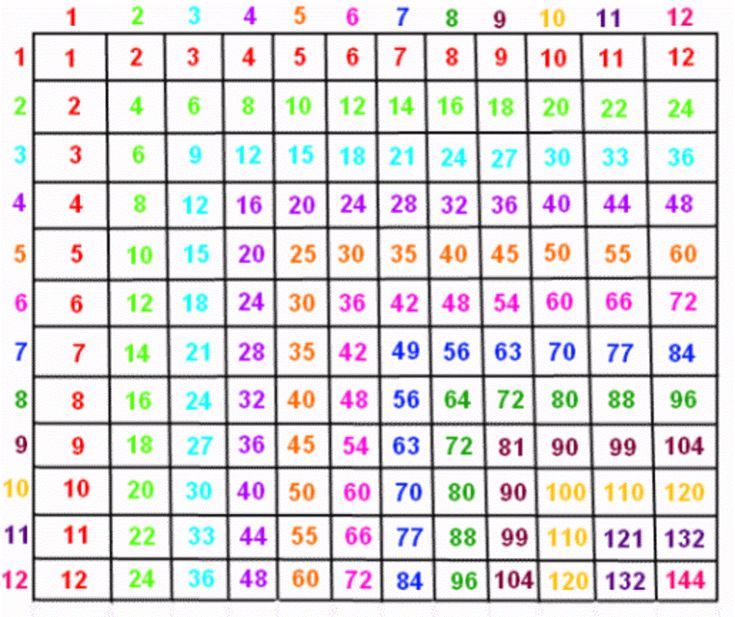 Different areas of the coloring are marked with numbers, and each number corresponds to a certain color. Coloring the picture, the child not only enjoys, but also remembers the multiplication table. You can buy a coloring book in a store or download it from the Internet and print it out.
Different areas of the coloring are marked with numbers, and each number corresponds to a certain color. Coloring the picture, the child not only enjoys, but also remembers the multiplication table. You can buy a coloring book in a store or download it from the Internet and print it out.
Game with dice and calculator
The multiplication table from 1 to 6 can be learned in a playful way. To do this, you will need two dotted dice and a calculator. Game progress: the child rolls the dice and multiplies the resulting numbers in his mind. And at this time you must multiply them on the calculator. Whoever gets it right first gets a point. After a while, switch roles.
Rectangle Game
This is another game technique to help you learn how to multiply different numbers. You will need a sheet of notebook paper in a box and two markers or felt-tip pens in different colors. You will use one, and your son or daughter will use the other. You also need two dice.
Game progress: lay out a sheet of paper on the table - this is the playing field. You will draw on one part, and the child will draw on the other. Throw the dice, and then draw a rectangle on your part of the paper sheet, the sides of which are as many cells as the number of points dropped on the dice. In the middle of the rectangle, write the number of cells that it contains.
The child makes the next move, then you again. The game continues until the entire sheet of paper is filled with rectangles. The winner is the one whose figures occupy more cells on the playing field.
Multiplication Tricks
Teach your son or daughter little math tricks to quickly remember multiplying certain numbers.
- Multiply by 1. This is the simplest rule in the table. Tell the child that any number multiplied by one does not change and remains as it was.
- Multiplying by 10. Here, too, everything is simple.
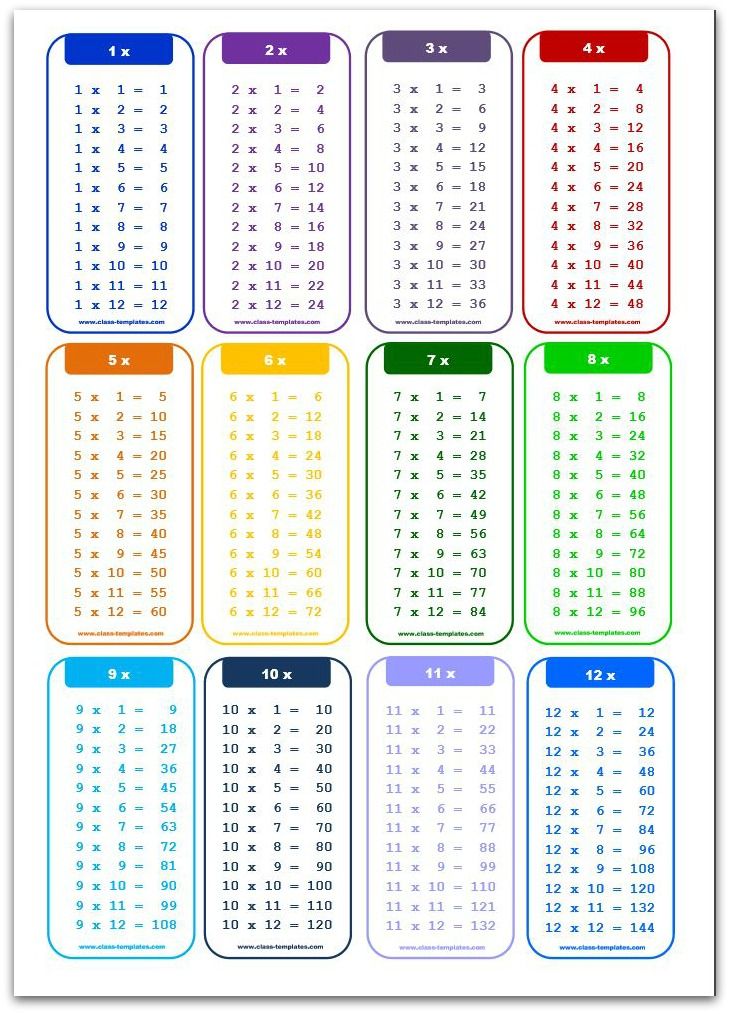 You need to multiply the required number by one, and then just add zero.
You need to multiply the required number by one, and then just add zero. - Multiplication by 2. If a child knows even numbers and can easily count by twos (two, four, six, eight ...), then remembering the rules for multiplying by two will be very easy for him.
- Multiplication by 4. Having learned multiplication by two, the child will easily remember the rules of multiplication by four. To do this, it is enough just to double the result.
- Multiplying by 5. If a child knows how to tell time using a mechanical watch, he will easily remember the rules for multiplying numbers by five. To do this, just look at the clock face and mentally add five minutes to each multiplied number. For example, 5x4=20, 5x7=35, etc. There is another regularity here. When multiplied by five, the result always ends in either the number 5 or the number 0. This is also easy to remember.
- Multiply by 9.
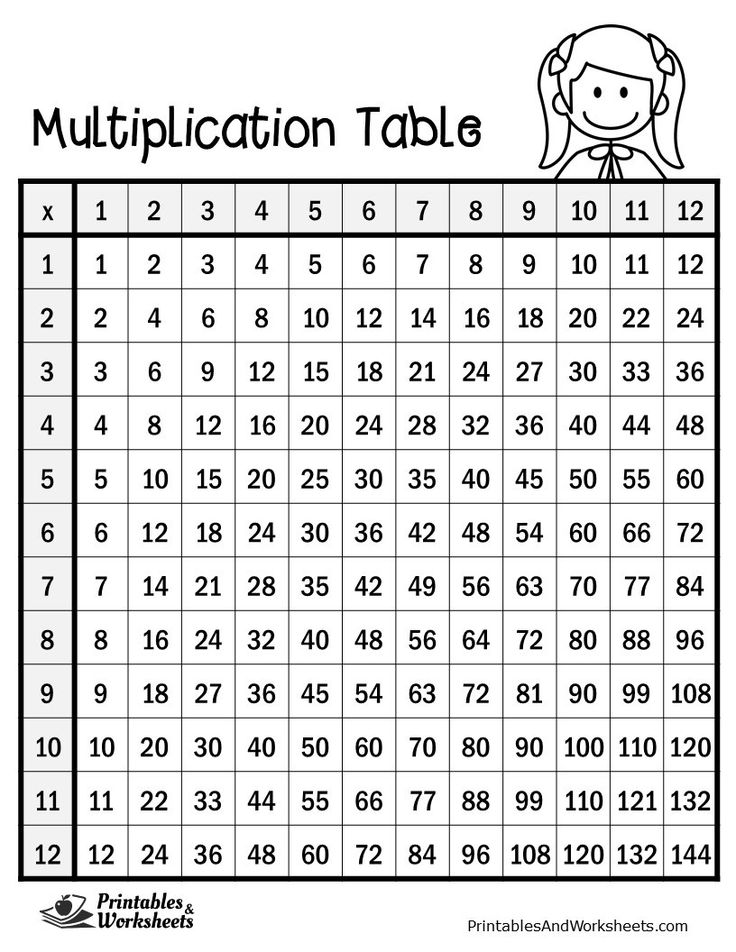 One of the more difficult rules is to multiply by nine. Children do not remember it well, often get confused. There is a little trick that allows you to learn this column of the table in a short time. You need to multiply the required number by ten (which is very easy), and then subtract one. Multiply by nine. Explain this pattern to a child, and he will very quickly remember the rules for multiplying by nine.
One of the more difficult rules is to multiply by nine. Children do not remember it well, often get confused. There is a little trick that allows you to learn this column of the table in a short time. You need to multiply the required number by ten (which is very easy), and then subtract one. Multiply by nine. Explain this pattern to a child, and he will very quickly remember the rules for multiplying by nine.
With the help of these rules, a child can easily learn half of the multiplication table.
Commutative property
Explain to your child a simple mathematical rule: the product does not change when the factors are changed. That is, the multiplied numbers can be interchanged, and the result will remain the same. For example, 5x3=15 and 3x5=15, 4x6=24 and 6x4=24. Having learned this pattern, the student will quickly remember many examples from the table.
Make up tasks close to real life
It is difficult for a child to memorize abstract examples that are not used in practice.